Research Sponsors
Current Projects
Self-healing 5L ANPC Inverter for Aerospace Applications
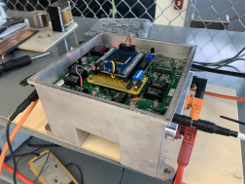
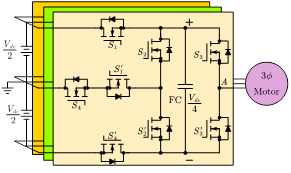
This project focuses on the development of a highly reliable 5-level Active Neutral Point Clamped (ANPC) inverter, specifically designed for electrical aircraft applications. The inverter is engineered for high redundancy and fault tolerance, ensuring that power can still be delivered even when one or more semiconductor devices fail.
Key aspects of the project include:
- Fault Tolerance: The inverter is capable of continuing to output power in the event of semiconductor failures.
- Advanced Fault Detection: Embedded intelligent algorithms are integrated at the hardware level to detect faults early and trigger appropriate corrective actions. This ensures operational continuity, enhancing reliability.
- Model-Based Design: The software aspect uses model-based design to simulate and validate the control and monitoring strategies.
- Embedded Intelligence: The inverter employs embedded algorithms for intelligent decision-making and fault detection.
- 5-Level Topology: The ANPC topology is used for enhanced performance, allowing for finer control of voltage steps and reduced switching losses.
- Robust Modulation: Advanced modulation techniques are implemented to ensure efficiency and stability under different operational conditions, even during failure scenarios.
- High Reliability: Given the critical nature of aircraft systems, the design prioritizes reliability and system redundancy to meet stringent safety requirements.
- Lightweight and Efficient: The design also likely takes into account the weight and power efficiency demands unique to aviation.
This combination of hardware-level fault detection and intelligent software-driven control ensures that the inverter is suitable for the rigorous demands of electrical aircraft, where high reliability and redundancy are paramount.
Space Microgrid and Habitat Testbed

This project focuses on proposing a reliable power system to support long-term human habitation on the Moon, Mars, and beyond. Space power systems are considered microgrids as they consist of an interconnection between different generation units and electrical loads.
For this research, the proposed microgrid systems are developed and implemented in a Modular Coupled Virtual Testbed (MCVT) to validate its operation and interconnection with the space habitat systems. Also, a Cyber-Physical Testbed (CPT) is built to evaluate microgrid performance under extraterrestrial conditions. The CPT incorporates both physical and cyber components, including solar arrays, electronic loads, nuclear generation, and energy storage systems. By simulating the space environments, this platform enables a thorough assessment of the microgrid’s resilience, identifying areas for improving power management, load prioritization, and fault mitigation in space habitats.
Arc Fault and Ground Fault Testing for Solar and Battery Inverters
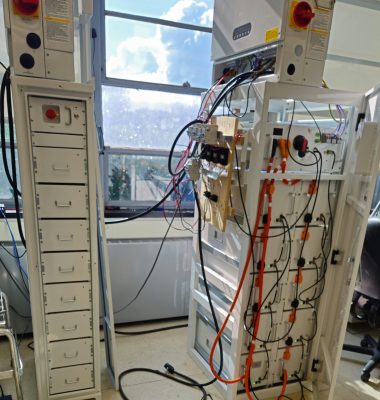
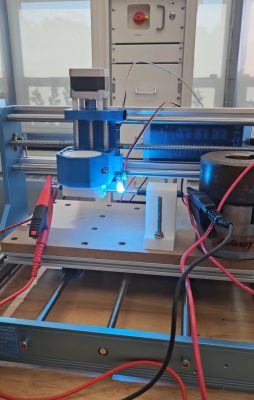
This project aims to test the capabilities of SAVANAT inverters and battery management systems. The inverter is tested under different faults such as Arc Fault Circuit Interrupter (AFCI) and Ground Fault Circuit Interrupter (GFCI). Regarding the battery tests, several tests are required and related to voltage, temperature, total pressure, total current acquisitions. Additionally, some of tests are concerned with the charging in terms of strengthen, and a few for communication tests.
Load Sharing Among Multiple Motor Drives For Maximum Efficiency
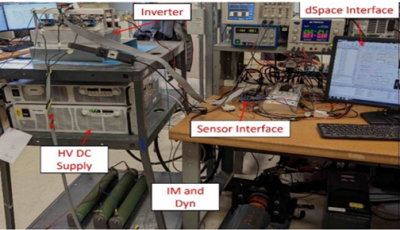
This project mainly focuses on Induction Motor Drives (IMDs). Many applications in different areas use multiple IMDs at the same time to meet the requirements of the load. Our research proposes a new criterion for mechanical load sharing to improve the lifetime, cost, and efficiency of the IMDs.
Additive Manufacturing of Electric Machines
SLM is the most viable method for producing magnetic core material based on the control that is possible with the SLM method. The SLM method allows for adjustment of laser power, laser scan speed, layer thickness and hatch distance. The loss separation of the magnetic core materials was provided by the permeameter and gave the specific coefficients needed for Bertotti analysis to give experimental and numerical values to hysteresis, Eddy current and stray losses for all the cores. These coefficients are rarely known for commercial value unless provided by the production company or measured by the engineer purchasing these magnetic devices. These experimental results meet IEC 60404-4, IEC 60404-2, IEC 60404-6, and ASTM A773. In order to prove the viability of the modular design, the airgaps created from the complex dovetail geometry need to be evaluated to show how the overall performance of the AM core material will be affected. To characterize the power loss in the dovetail airgap, several complex dovetail joints were developed. Each of the transformer cores with the dovetail joints are compared to the existing AM transformer core.



Core Loss Characterization of Electric Machines Under Multi-level Inverter Excitation

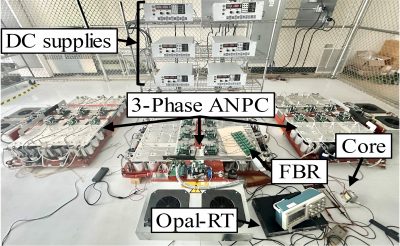
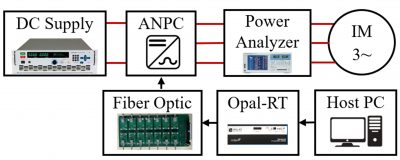
This research explores the impact of Multi-Level Inverters (MLI) on core losses in electromagnetic devices. A 120kW reconfigurable Active Neutral Point Clamped (ANPC) is utilized to assess 3, 5, and 7-level voltage waveforms. The study identified a critical trade-off between the number of levels, switching frequency, and core loss reduction, offering insights into optimizing voltage level excitation and switching frequencies.
Skin Effects in Hairpin Windings
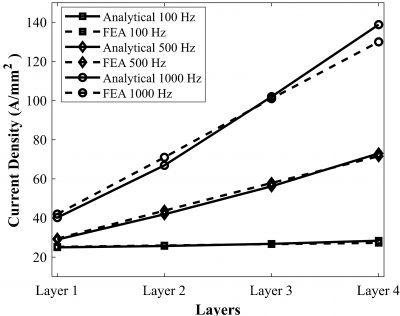
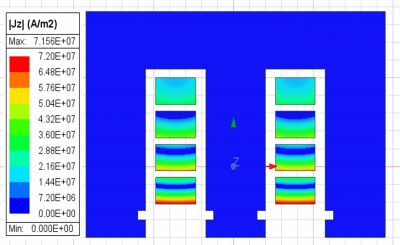
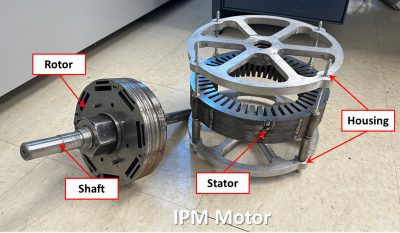
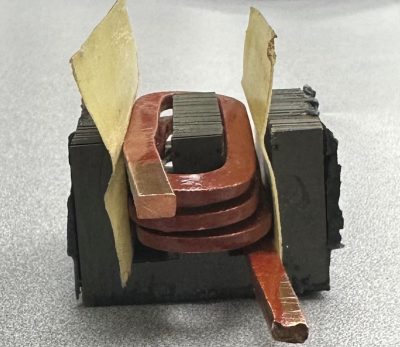
This research involves developing an analytical model to evaluate the skin effects in hairpin windings for electric machines. The analytical outcomes are validated against 2D Finite Element Analysis (FEA) simulations across a range of frequencies, ensuring the model's accuracy in predicting current distribution and skin effects under practical operating conditions. This approach helps in optimizing HW designs for improved performance in electric machines for electric vehicles (EVs).
Next-level Grid Resilience by Utilizing Sensors in Distributed Power Converters
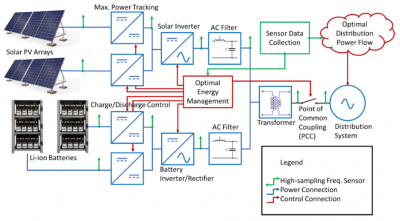
This project investigates the impact of distributed sensors that are already built-in power converters in DERs on grid resiliency. The main tasks include modeling and simulating a small-scale AC microgrid with solar PV arrays and storage systems. Simulations are performed for different operating scenarios and converter sensor data are collected. Faults are injected in the microgrid at random times. The collected data are then processed for critical information by using logic-based and AI techniques that further enhance observability and latest distributed oscillation detection with resilience against contaminated measurements.
Sensor Fault Detection, Diagnosis and Control Reconfiguration for PMSM Drives

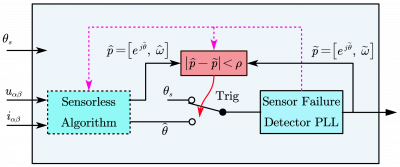
This project investigates the impact of position sensor and current sensor failures on PMSM drives. New real-time fault detection techniques for current and position sensor faults using the motor mechanical model are proposed. Once the fault is successfully detected a PMSM drive reconfiguration is proposed. The fault reconfiguration/fault tolerant operation will be using observers and sensorless algorithms to maintain stable drive operation.
GaN-HEMT Buck-Boost Micro-inverter
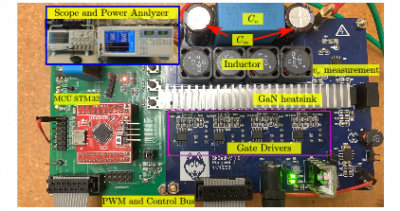

This prototype introduces a 300W, single-phase, single-stage buck-boost inverter featuring a coupled inductor, designed to enhance input voltage compatibility and modulation flexibility for medium-power solar energy applications. Implemented with GaN HEMT devices and operating at a 100kHz switching frequency, the system achieves high efficiency while minimizing passive component size, including the coupled inductor and output capacitor. Experimental validation confirms the feasibility and effectiveness of this design, demonstrating broad voltage adaptability and high-performance solar energy interfacing. This topology presents a promising solution for power optimization and improved energy conversion in solar power systems.
Selected Previous Projects
Nanostructured Armature Winding Insulation for Electric Propulsion Motor with High Torque Density
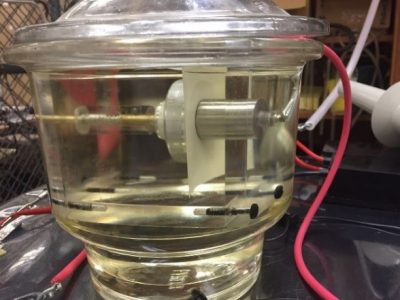

This research focuses on increasing the torque density and payload efficiency of large electric propulsion machines by using a new nanostructured armature winding insulation material. In this research, we are collaborating with a group from the Institute of Materials Science, UConn. Our group's focus is on multi-physics FEA simulation of a large electric machine using different insulation materials. The simulation analyses will provide estimation of the enhancement of the machine's torque density and efficiency as well as instruct the machine re-rating process. A high-voltage and high-frequency system is designed to perform the aging study of nano-structured materials which will be used in specific medium- and high-voltage applications. The power stage is designed with commercial high-voltage high-power switching devices, control circuitry is designed to control the power supply and the high-power switching devices. The time to failure and the dv/dt properties of material under test are of special interest.
Three-port DC/DC Converters for Microgrid Applications
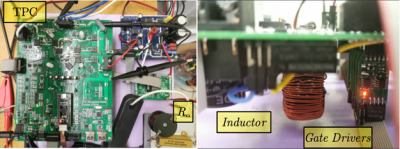
This prototype is designed for research on enhancing the accessibility and flexibility of renewable energy interfacing in microgrids. It features a novel three-port DC-DC converter topology, with a detailed analysis of the switching operation that considers parasitic parameters from the equivalent circuit model. Two power-sharing modes are selected and modeled using a unified nonlinear approach, along with the proposed modulation strategy to represent the dynamic behavior of the circuit accurately. An equivalent average circuit model and its small signal model are derived and validated through simulation results, confirming their accuracy. Experimental results successfully demonstrate mode-shifting operation under open-loop conditions. This prototype serves as a foundation for future research to develop control algorithms for high-performance closed-loop power regulation across all three ports in the proposed three-port converter (TPC).
Self-Healing Multi-level Power Converters
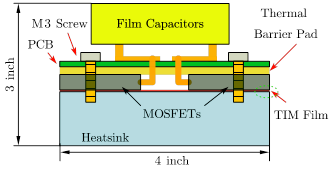
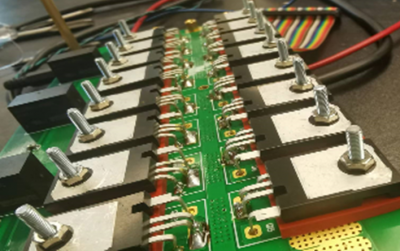
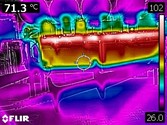
Wide-bandgap (WBG) semiconductor devices enhance power converters with high voltage tolerance and fast switching. For medium-voltage applications, modular multilevel converters (MMCs) offer high power capability and reduced EMI. This research develops a 1.2 kW/in³, 100kW H-bridge module, focusing on power loss analysis, thermal evaluation, and switching transient performance. A novel parallel gate drive circuit is introduced to synchronize switching transients. An experimental prototype with optimized PCB trace and cooling design is tested at various power levels. The results demonstrate high power density and improved thermal management, contributing to the advancement of high-performance multilevel converters for medium-voltage applications.
Power Rerouting Strategy in Microgrids
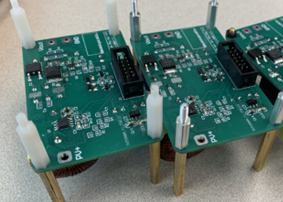
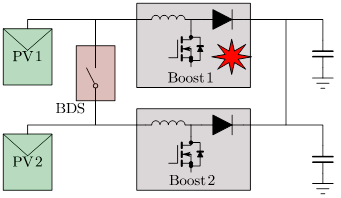
This prototype is designed for research on distributed power optimization in photovoltaic (PV) energy harvesting systems, aiming to improve both system efficiency and reliability. The design utilizes multiple parallel Boost converters connected to individual PV panels. The research focuses on reliability assessment, fault detection, reconfiguration, and seamless operation methods. An advanced control approach, combining solid-state and hybrid relay control, is experimentally verified to ensure smooth operation and fault resilience. This prototype serves as a foundation for future research to further enhance the performance and reliability of PV energy harvesting systems through distributed optimization techniques.
Hierarchical Control of Multi-Drive Systems
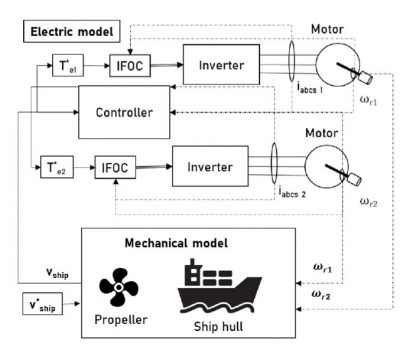
This project aims at establishing redundancy and operating it in optimal manner for maximum efficiency, maximum availability, or other objectives when multiple drives are used. Focus is on switched controller theory and design, redundancy management in multi-level power converters, and machine-inverter interaction and maximum efficiency control.
A method for generating an optimally attractive scent for Asian Citrus Psyllid (ACP) biocontrol

Citrus orchards in parts of the U.S. have been suffering from ACP and require biocontrol. Automation is critical in this process, in order to disperse optimal scents that attract and kill ACP. This project aims at characterizing graphene as a medium for controlling scent release, and automation design including power supply design for multi-channel independent control outputs.
Additive Manufacturing of Electric Machines for Underwater Vehicle Applications
This exploratory research focuses on characterization of various ferromagnetic material used in 3D printing with comparison to other material manufactured for electric machine usage using standard manufacturing methods. Focus is on power loss characterization, and optimal 3D design spaces that are not usually explored with laminations and 2D projections.
Optimal Light Duty EV Charging Station Locations with Supplemental Clean Energy Microgrids
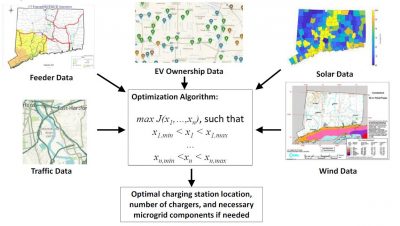
The project aims at using various data available in Connecticut to determine optimal locations of EV charging stations, and the number of chargers per station. Focus is given to availability of feeder capacity, as well as a microgrid design tool for areas where EV chargers are necessary but utility feeder capacity is limited.
Adaptive Modulation Time-Domain Fault Diagnosis of Three-Phase Induction Machines

AC induction motors are the workhorses are the industrial world, and as such, faults in the motor must be detected quickly and effectively so that the motor can be repaired before further damage is done. The focus of this research is to develop a simple time-domain method of identifying all four major induction motor fault types (eccentricity fault, broken rotor bar fault, bearing fault, and stator short winding fault) at an early stage, with an implementation that will require minimal signal processing and no additional sensors besides those already in place for control purposes. This novel method has the ability to adapt to the speed and torque conditions of the motor and is called adaptive modulation.
Machine Learning Approaches for Si and SiC IGBT and MOSFET Failure Diagnosis and Prognosis

This project aims at establishing a computationally-efficient platform to perform fault prognosis and diagnosis in DC/AC inverters which use Si or SiC MOSFETs or IGBTs. We collaborate with another UConn group on the machine learning algorithms, and optimize the implementation on standard FPGAs and DSPs for hardware-in-the-loop verification and testing. We also tie physical degradation and failure aspects to data trends.
GaN Capacitive Wireless Charging
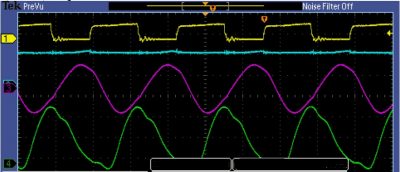
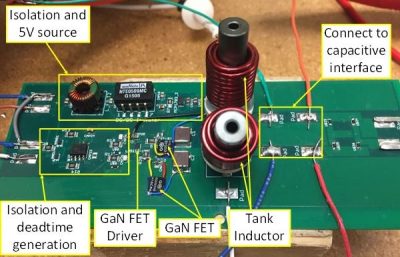
This research investigates the efficiency and cost of the H-bridge and half-bridge converters as transmitter drivers in a capacitively-coupled wireless energy transmission system for tablet applications. The H-bridge and the half bridge were chosen due to their popularity, widespread implementation in resonant power converters, simplicity, and low cost. The system was designed at the component level using theoretical calculations and a simplified model of the system was then simulated in MATLAB/Simulink. After validation of the designs, both systems were constructed and their efficiency and cost were analyzed. The results indicate that H-bridge is more efficient and the half-bridge is more cost effective in capacitively-coupled charging applications. GaN is an enabling technology to improve the energy transmission and switching frequency.
Modeling and Optimization of Reconfigurable Multilevel Inverter to Improve Power Quality
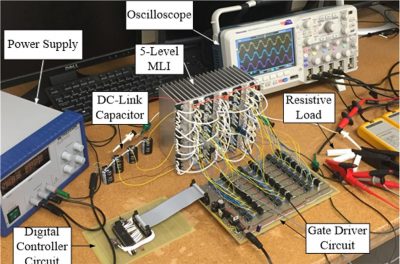
This research proposes an analytical model of SPWM harmonics which can include both high and low harmonics. The SPWM model is derived on the level-shifted PWM case for a neural point clamped (NPC) inverter as an example. Then the proposed model is utilized to study the impact of different reconfiguration methods on the line-to-neutral voltage and explore the harmonic contents and effects to emphasize that voltage quality improvement should go beyond just maintaining the desired line-to-line voltage shape. Besides mathematical model based analysis, simulation in MTLAB/Simulink is performed to verify the proposed model and a 5 level Neutral Point Clamped (NPC) inverter is built in hardware to perform more analysis of RMS and THD. Finally, optimization of reconfiguration methods is proposed to improve the existing reconfiguration methods.
Logic-Based Methods for Intelligent Fault Diagnosis and Recovery in Power Electronics


This research proposes logic-base methods using combinational and fuzzy logic to diagnose faults in power electronic systems. This method can extend to faults in the source, load, and other parts of a power electronic system besides power electronic components. The methods presented in this research are characterized by simplicity for implementation on existing digital platforms, and accuracy in detecting several faults that may occur in a variety of components. Redundancy strategy is utilized to recover the failed system by replacing the failed component. Redundancy of power components may not be cost-effective for a single micro-inverter, however, it is cost-effective when a single fault may cause the complete replacement of the micro-inverter.
Modeling Efficiency, Cost, and Reliability of Power Electronics
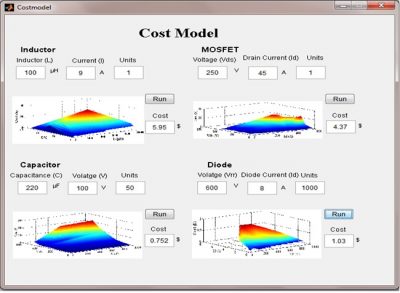

With power electronics converter design being a multi-variable optimization problem (efficiency, performance, cost, and reliability) these essential characteristics have to be evaluated and improved. This research aims at developing models of these different characteristics with the current focus being on efficiency and cost. The tools developed currently address basic DC/DC converter tolopologies can be extended to many others. The tools are capable of estimating power losses in these converters and approximate costs (based on surface-fit models) with specific component parameters, and can also run in "optimization" mode where part numbers are suggested from a large database for minimum loss or minimum cost. Efficiency of the whole converter is estimated from the power loss of different components aggregated into different topologies. The converter cost is also estimated based on available component options. The tools only take datasheet and converter ratings for the component-specific mode, and only converter ratings for the optimization mode.
Combining Electric Drive Energy-Efficiency and High Performance for HVAC Applications
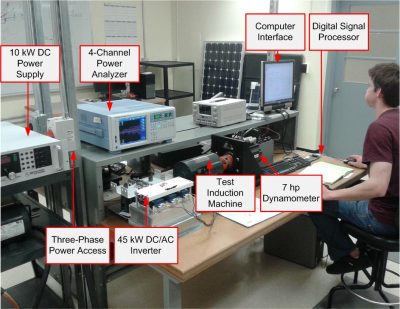
This research was sponsored by United Technologies Corporation (UTC-BIS). This research focuses on combining efficiency enhancement algorithms and methods in electric drives by minimizing losses in power electronic inverters and electric machines using real-time optimization, while focusing on maintained high performance control of these drives. Embedded systems holding this algorithms and their interaction with their surrounding power electronics and electric machine is of main interest. This research is supported by United Technologies Corporation (UTC-BIS)
Solar Photovoltaic DC and AC Conversion
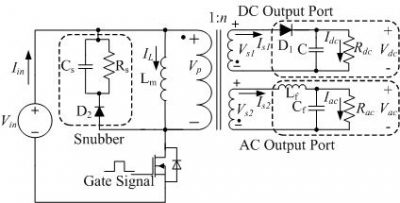
Micro-inverters have seen significant interest in both academic research and industrial venues. Their existance in grid-tied solar photovoltaic systems is desired for different efficiency and reliability reasons. But, some applications such as battery-charging, stand-alone micro-grids, and even residential installations might just a regulated dc output. This project investigates existing and new dc/dc and dc/ac topologies for solar photovoltaic applications with focus on their applicability.
Integrated Solar PV and Thermoelectric Energy System
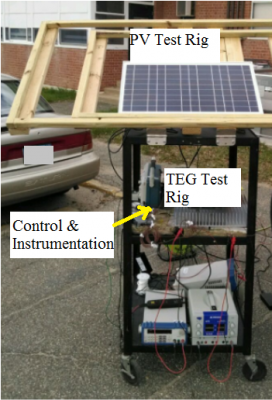
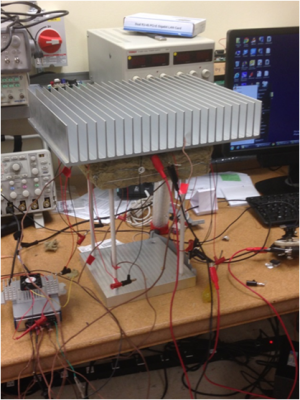
This research addresses the combination of PV and thermoelectrics into a single hybrid energy system. The test rig shown below currently combines these sources with maximum power extraction from each to charge a battery, and further research on optimal performance and energy harvesting is being investigated.
Modular Linear Induction Machine



A senior design team (Jonathan Rarey, Julio Yela, and David Hackeny) successfully simulated, designed, built, and cotrolled a linear induction machine that is highly modular for further research on construction, material, control, and various other topics. The team won first place in the ECE senior design competition during Fall 2013-Spring 2014.
Modeling and Real-Time Simulations of Microgrids with Significant Renewable Penetration
This research has already established or upgraded existing dynamic models of major microgrid components in line with UCONN's recently awarded microgrid on Depot Campus. These dynamic models are being utilized to evaluate the microgrid's response under uncertain operating conditions, in addition to the performance of power electronic controllers to microgrid faults, islanding, and grid connection.
Real-Time Emulation and Simulation of Electric Vehicles and Electric Ship Propulsion

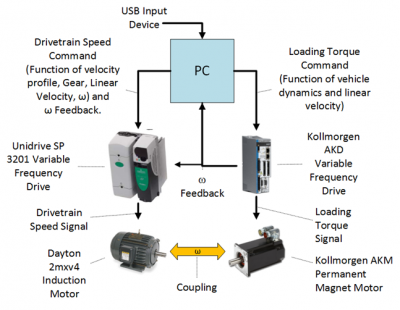
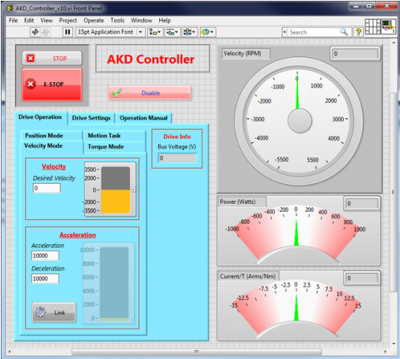
Real-time simulation is a major time-saving tool for lengthly simulations. This research focuses on utilizing realt-time simulations of an electric vehicle and a ship propulsion system to evaluate their efficiency, performance, and reliability. In parallel with the sumulation, a real-time vehicle emulator has been implemented in LabVIEW by taking into consideration major vehicle dynamics and real driving schedules. Various other research topics in terms of vehicle safety are being investigated with results that will be soon reported in publications.


















